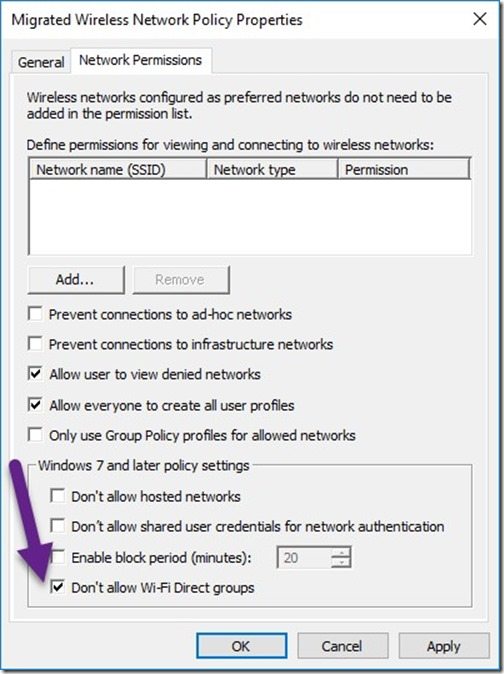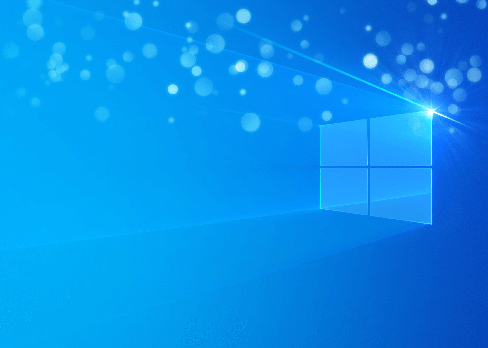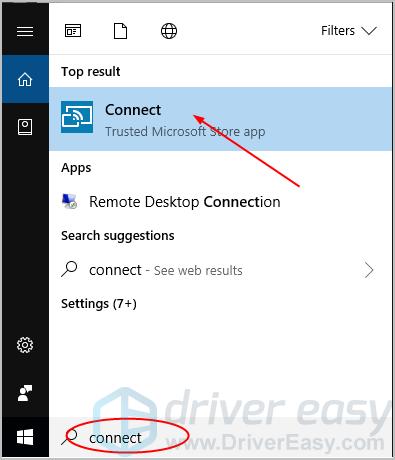-->
- WiFi issues, Miracast firmware and Windows 10 itself could be the cause of the problems but it’s not encouraging when Miracast support and devices have been around for so long. Given that there are now other options than Miracast and that a TV can be made ‘smart’ at so little cost, Miracast doesn’t have the rosiest looking future.
- Miracast free download - Miracast Display Finder, Miracast App, Miracast Screen Sharing/Mirroring Shortcut, and many more programs.
- Miracast is easy to use for Windows 10, and there are many devices that come with a built-in Miracast support, making connecting to your PC easy. Here, we’ll show you how you can use Miracast to connect your Windows 10 PC to your TV or other devices. How Miracast Works. Miracast is a technology built into Windows 10 PCs. It allows your PC to.
Note
This document describes how drivers can implement a custom Miracast stack in Windows 8.1. As of Windows 10, the OS ships with a built-in Miracast stack that can work on any GPU and it is no longer recommended that drivers implement a custom Miracast stack. This documentation is therefore deprecated and Microsoft may remove support for custom Miracast stacks in a future version of Windows.
Also, considering the issue occurred after the recent windows 10 update, it seems to be an issue with the driver and I recommend you update them using the below steps: I suggest you to update the Miracast Wireless Display adapter from the Device manager manually by following the steps below and check if the issue is resolved. Wireless (Miracast) displays can only be supported by Windows Display Driver Model (WDDM) 1.3 and later models. The easiest way to update your Intel WIDI Windows 10 is to download and install the Intel Driver Update Utility Tool. This tool automatically checks and updates your drivers to the latest version.
Wireless (Miracast) displays can optionally be supported by Windows Display Driver Model (WDDM) 1.3 and later drivers. This capability is new starting with Windows 8.1.
For more information on the requirements of drivers and hardware to support Miracast displays, refer to the Building best-in-class Wireless Projection solutions with Windows 10 guide and the relevant WHCK documentation at Device.Graphics.WDDM13.DisplayRender.WirelessDisplay.
Miracast design guide
These design guide sections describe how display miniport drivers and Miracast user-mode drivers support Miracast displays:
Miracast reference

These reference sections describe how to implement this capability in your drivers:
User-mode device driver interfaces (DDIs)
Wireless display callback functions called by Miracast user-mode drivers
The reference pages in this section describe wireless display (Miracast) user-mode functions that the operating system implements. Only Miracast user-mode drivers can call these functions.
Pointers to the Miracast display callback functions are returned in a MIRACAST_CALLBACKS structure.
| Topic | Description |
|---|---|
| PFN_GET_NEXT_CHUNK_DATA | Provides info about the next Miracast encode chunk that was reported to the Microsoft DirectX graphics kernel subsystem when the DXGK_INTERRUPT_TYPE interrupt type is DXGK_INTERRUPT_MIRACAST_CHUNK_PROCESSING_COMPLETE. |
| PFN_MIRACAST_IO_CONTROL | Called by the user-mode display driver to send the kernel-mode display miniport driver a synchronous I/O control request. |
| PFN_REGISTER_DATARATE_NOTIFICATIONS | Called by the user-mode driver to register with the operating system to receive network quality of service (QoS) notifications and the current network bandwidth of the Miracast connection. |
| PFN_REPORT_SESSION_STATUS | Called by the user-mode display driver to report the status of the current Miracast connected session. |
| PFN_REPORT_STATISTIC | Called by the user-mode display driver to report the statistics of the Miracast link to the operating system. |
Wireless display functions implemented by Miracast user-mode drivers
The reference pages in this section describe wireless display (Miracast) functions that a Miracast user-mode driver must implement. This type of driver runs in a standalone DLL.
In response to an operating system call to the QueryMiracastDriverInterface function, the Miracast user-mode driver must supply pointers to these functions in the MIRACAST_DRIVER_INTERFACE structure, except for pfnDataRateNotify, which is has a pointer declared in RegisterForDataRateNotifications.
| Topic | Description |
|---|---|
| PFN_CREATE_MIRACAST_CONTEXT | Called by the operating system to create a user-mode Miracast context. |
| PFN_DESTROY_MIRACAST_CONTEXT | Called by the operating system to destroy a user-mode Miracast context. |
| PFN_HANDLE_KMD_MESSAGE | Called by the operating system to handle the asynchronous kernel-mode message that the Miracast user-mode driver receives when the display miniport driver calls the DxgkCbMiracastSendMessage function. |
| PFN_DATARATE_NOTIFICATION | Called by the operating system to notify the Miracast user-mode driver that the bit rate of the Miracast network link has changed. This function is registered with the operating system when the RegisterForDataRateNotifications function is called. |
| QUERY_MIRACAST_DRIVER_INTERFACE | Called by the operating system to query the Miracast user-mode driver interface, MIRACAST_DRIVER_INTERFACE. |
| PFN_START_MIRACAST_SESSION | Called by the operating system to start a Miracast connected session. |
| PFN_STOP_MIRACAST_SESSION | Called by the operating system to start a Miracast connected session that had earlier been started by a call to the StartMiracastSession function. |
Wireless display (Miracast) structures and enumerations
All user-mode structures and enumerations that are used with Miracast display device driver interfaces (DDIs).
| Topic | Description |
|---|---|
| MIRACAST_CALLBACKS | Contains pointers to wireless display (Miracast) runtime callback functions that the Miracast user-mode driver can call. |
| MIRACAST_CHUNK_DATA | Contains encode chunk data that is used when a user-mode driver calls the wireless display (Miracast) GetNextChunkData function. |
| MIRACAST_CHUNK_ID | Stores info that identifies a wireless display (Miracast) encode chunk. |
| MIRACAST_CHUNK_INFO | Contains info about a specified wireless display (Miracast) encode chunk. |
| MIRACAST_CHUNK_TYPE | Specifies the types of wireless display (Miracast) chunk info that is to be processed. |
| MIRACAST_DATARATE_STATS | Contains info used in the wireless display (Miracast) pfnDataRateNotify function about the audio/video encoder bit rate and failed or retried Wi-Fi frames. |
| MIRACAST_DRIVER_INTERFACE | Contains pointers to wireless display (Miracast) functions that are implemented by the Miracast user-mode driver. |
| MIRACAST_PROTOCOL_EVENT | Specifies the types of wireless display (Miracast) protocol event that the user-mode display driver should report. |
| MIRACAST_SESSION_INFO | Contains info on a wireless display (Miracast) connected session. |
| MIRACAST_STATISTIC_DATA | Contains Miracast statistics data that the user-mode display driver reports to the operating system. |
| MIRACAST_STATISTIC_TYPE | Specifies types of Miracast statistics data that the user-mode display driver generates. |
| MIRACAST_STATUS | Specifies status types that the user-mode display driver uses to report Miracast connection status. |
| MIRACAST_WFD_CONNECTION_STATS | Contains bit rate info on the Wi-Fi Direct connection. |
These additional user-mode structures and enumerations support Miracast displays and are new or updated for Windows 8.1:
- DISPLAYCONFIG_TARGET_BASE_TYPE (new)
- DISPLAYCONFIG_VIDEO_SIGNAL_INFO (AdditionalSignalInfo child structure added)
- DISPLAYCONFIG_DEVICE_INFO_TYPE (DISPLAYCONFIG_DEVICE_INFO_GET_TARGET_BASE_TYPE constant added)
- D3DKMDT_VIDEO_SIGNAL_INFO (AdditionalSignalInfo child structure added)
- DISPLAYCONFIG_DEVICE_INFO_TYPE (DISPLAYCONFIG_DEVICE_INFO_GET_TARGET_BASE_TYPE constant added)
Kernel-mode DDIs
Wireless display (Miracast) display callback interface
The Miracast display callback interface contains functions that are implemented by the Microsoft DirectX graphics kernel subsystem to support wireless (Miracast) displays. This interface is supported starting in Windows 8.1.

This section contains reference pages for these kernel-mode functions, which are called by Windows Display Driver Model (WDDM) 1.3 and later display miniport drivers:
| Topic | Description |
|---|---|
| DXGKCB_MIRACAST_SEND_MESSAGE | Sends an asynchronous message to the user-mode display driver. |
| DXGKCB_MIRACAST_SEND_MESSAGE_CALLBACK | Called in kernel mode when the message that was sent to the user-mode driver with a call to the DxgkCbMiracastSendMessage function has completed or has been canceled. |
| DXGKCB_MIRACAST_REPORT_CHUNK_INFO | Called by the display miniport driver to report info about an encode chunk. |
The display miniport driver must fill in pointers to these functions in the DXGK_MIRACAST_DISPLAY_CALLBACKS structure.
Wireless display (Miracast) interface
This section contains kernel-mode functions that are implemented by display miniport drivers that support wireless (Miracast) displays. This interface is supported starting in Windows 8.1.
Pointers to the Miracast interface functions are returned in a DXGK_MIRACAST_INTERFACE structure.
| Topic | Description |
|---|---|
| DXGKCB_MIRACAST_SEND_MESSAGE_CALLBACK | Called in kernel mode when the message that was sent to the user-mode driver with a call to the DxgkCbMiracastSendMessage function has completed or has been canceled. |
| DXGKDDI_MIRACAST_CREATE_CONTEXT | Creates a kernel-mode context for a Miracast device. |
| DXGKDDI_MIRACAST_DESTROY_CONTEXT | Destroys an instance of a Miracast device. |
| DXGKDDI_MIRACAST_HANDLE_IO_CONTROL | Called by the operating system to request that the display miniport driver process a synchronous I/O control request in response to a user-mode display driver call to the MiracastIoControl function. |
| DXGKDDI_MIRACAST_QUERY_CAPS | Queries the Miracast capabilities of the current display adapter. The operating system calls this function only when the display adapter is first started and then stores the capabilities that are returned. |
These additional kernel-mode structures and enumerations support Miracast displays and are new or updated for Windows 8.1:
- D3DKMDT_VIDEO_OUTPUT_TECHNOLOGY (D3DKMDT_VOT_MIRACAST constant added)
- D3DKMDT_VIDEO_SIGNAL_INFO (AdditionalSignalInfo child structure added)
- DXGK_CHILD_STATUS (Miracast child structure added)
- DXGK_CHILD_STATUS_TYPE (StatusMiracast constant added)
- DXGKARGCB_NOTIFY_INTERRUPT_DATA (MiracastEncodeChunkCompleted child structure added)
High-definition content sharing on
Wi-Fi® devices everywhere
Driver Miracast For Windows 10
Wi-Fi CERTIFIED Miracast™ enables seamless display of multimedia content between Miracast® devices. Miracast allows users to wirelessly share multimedia, including high-resolution pictures and high-definition (HD) video content between Wi-Fi devices, even if a Wi-Fi network is not available.
Miracast:

Miracast Driver Windows 10 Update
- Projects content from mobile devices to automobile infotainment systems
- Shares a laptop screen with a conference room projector in real-time
- Streams HD and 4K Ultra HD movies from a tablet to an HD television
- Shows pictures from a smartphone, computer, or tablet to a large screen television
- Support a wide range of audio/video formats to extend battery life in mobile devices
Miracast also supports premium content—such as Blu-ray feature films, live television shows and sports, and other copy-protected premium content—allowing you to watch what you want, where you want.
Standards-based Miracast advances life without wires
Miracast is an industry-wide solution, allowing technology to work across device types and vendors. Connections are easy to set up and use since Miracast devices choose the appropriate settings automatically. Miracast can connect two devices using network infrastructure or Wi-Fi Direct®. When content to be shared is stored on a Miracast-certified device, such as a smartphone to an automobile infotainment display, a Wi-Fi network connection is not required.

Only devices marked Wi-Fi CERTIFIED Miracast have been certified by Wi-Fi Alliance® to work well with other Wi-Fi CERTIFIED™ devices, employ the latest security protections, and deliver a high-quality user experience.
Wi-Fi CERTIFIED Miracast™: Your Content - Now Showing on Screens Everywhere
| Wi-Fi CERTIFIED Miracast™ delivers high-resolution multimedia experience |
| New Wi-Fi Alliance® technologies shine at CES 2013 |
| Easy-to-use, multi-vendor wireless display has arrived: Wi-Fi Alliance® launches Wi-Fi CERTIFIED Miracast™ |
| Miracast certified products |
- Are Wi-Fi CERTIFIED products protected by security?
As of July 1, 2020, all new Wi-Fi CERTIFIED devices require WPA3. The only way to be sure that a product meets the latest security standards is to purchase only Wi-Fi CERTIFIED products.
- How does Wi-Fi Alliance help ensure product compatibility and a good user experience for certified products?
Compatibility and quality are achieved through testing of Wi-Fi products. Consumers should always look for the Wi-Fi CERTIFIED logo to ensure the best user experience possible.
- What has changed in Miracast since its original release?
New enhancements focus on high-definition (HD) content, increased performance, and better battery life for Miracast devices.
- Is a Wi-Fi connection needed to stream a video from the internet?
Miracast is unique to other wireless display solutions in that a direct peer-to-peer connection between two devices may be formed to share content residing on the source device, without the need for a Wi-Fi network. If streaming content from the internet, a network connection is required.
- Does Miracast support devices like wireless speakers? (audio only)
Audio-only devices are not part of the Miracast certification program.
- How does Miracast protect premium content?
Miracast provides industry-standard protection of premium content through support of High-bandwidth Digital Content Protection (HDCP). HDCP is a wireless adaptation of the same trusted content protection mechanisms widely used for cabled interfaces, providing diversity in premium content options. This feature is designed to protect the digital rights of content owners and to encourage their efforts to make their content available.
- What formats does Miracast support?
Miracast supports many commonly used audio/video format. For a complete list, download the Miracast Technical Overview.
- How is Miracast related to Wi-Fi Direct?
Wi-Fi Direct allows devices to connect directly to each other, without the need for a Wi-Fi access point (AP). It simply requires the push of a button or the entry of a PIN. Wi-Fi Direct allows source and display devices to discover one another and provides the underlying device-to-device connectivity for Miracast. Miracast builds upon Wi-Fi Direct with mechanisms to negotiate video capabilities, setup content protection (if needed), stream content, and maintain the video session.
- What features does Miracast certification test?
Miracast certification includes testing for audio/video (A/V) latency, quality, and synchronization offset. Testing ensures that devices operate across vendors, provide simplified discovery and setup, meet the minimum display resolution requirement, and implement content protection (when implemented). Miracast devices are also tested for implementation of WPA2™ security. Wi-Fi Alliance members may view details on certification testing in the Wi-Fi CERTIFIED Miracast Test Plan.
- Must both the content source and display be Miracast devices?
Both the display and the source devices must be Miracast certified. Miracast may be used on devices without embedded Wi-Fi capability by using a Miracast-certified adapter that supports an interface such as High-Definition Multimedia Interface (HDMI) or Universal Serial Bus (USB).
- What types of equipment are tested?
Miracast certification is available for video-capable devices such as TVs, handsets, tablets, laptops, set-top boxes, cameras, and projectors.
- What is the difference between Miracast and Wi-Fi Display?
Miracast is the brand for the certification program operated by Wi-Fi Alliance. Devices that pass this certification testing can be referred to as “Wi-Fi CERTIFIED Miracast™ devices” or “Miracast® devices”. Miracast certification is based on the Wi-Fi Alliance Wi-Fi Display Technical Specification. This is the underlying specification developed by Wi-Fi Alliance members, and is copyrighted and owned by Wi-Fi Alliance.
- How do I activate TDLS?
Two Wi-Fi CERTIFIED TDLS devices will automatically form a direct connection after linking to the Wi-Fi network. No user interaction is required.